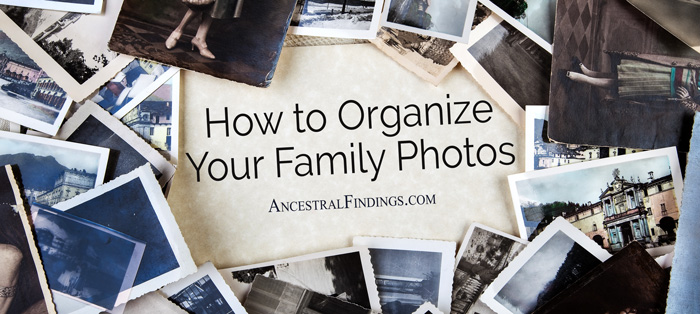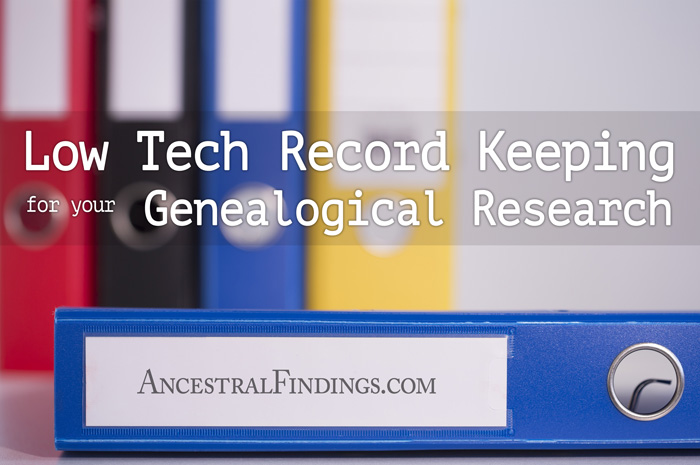There’s a certain charm to scrolling through digital records at midnight, coffee in hand, uncovering new ancestors with the click of a button. But once you’ve collected a few dozen census pages, probate files, and handwritten family notes, you might start to feel a little… buried. Tabs multiply, download folders fill up, and suddenly, you’re not sure where that one 1870 census record went—or whether you ever saved it in the first place.
That’s where paper steps in—not as a step backward, but as a grounding force in your research. Building a paper-based family history folder (or several) gives your work structure, clarity, and even a bit of beauty. It’s not just about printing out documents. It’s about creating something you can flip through, revisit, and share.
Let me show you why I returned to paper—and why it’s become one of the most valuable tools in my own research.
1. Holding a Copy Still Feels Like Holding History
I don’t have many original records from my ancestors. Most of those are tucked away in courthouses, state archives, or who-knows-where. But I do have copies—scanned images, printed PDFs, and the occasional certified document that arrived in the mail with an official seal. And let me tell you: even those copies carry weight.
One of the first things I printed was my great-grandfather’s World War I draft card. I’d looked at it online a dozen times, but holding the paper in my hand—seeing his signature and the registrar’s stamp—something clicked. It stopped being just a record. It became a moment in time.
Since then, I’ve printed census pages, church records, land deeds, and more. I slide them into sheet protectors, label them, and tuck them into folders. The experience of turning real pages while researching—not just clicking—changed how I see the work. It slows me down in the best way and helps me notice things I’d skimmed right past on screen.
Tip: Download and print the highest-resolution image you can find. If the record’s hard to read, add a typed transcription behind it. That way, both versions stay together in the folder.
2. Paper Keeps You Focused and Organized
At one point, I had so many digital files that I couldn’t keep track of what I had already found. I’d be halfway through a new census search, only to realize I’d downloaded the same page last year and filed it under a slightly different name. That’s when I decided to print what mattered and build something I could physically flip through.
Each family now has its own folder—some organized by surname, others by couple. I’ve added tabs for vital records, census entries, military files, and handwritten notes. Inside the front of each folder, I keep a short “research log”—just a lined sheet where I jot down what I’ve looked for and what I still need. It helps me stay on track, especially when I step away from research for a while.
When someone in the family asks me about a name or date, I don’t have to search through digital folders and spreadsheets. I can just open the paper file, flip to the right section, and find it right there.
Tip: Color-coding folders by line (or by state) has been a lifesaver. I use blue for one side of the family, green for the other, and yellow for families still in the mystery category.
Tip: Even if you don’t use fancy forms, tuck in a family group sheet or two for quick reference. It makes spotting gaps and inconsistencies much easier.
3. A Paper Folder Becomes a Legacy
This part really hit me a couple of years ago when I pulled out one of my early folders to show a relative who’d just started getting curious about our family history. They flipped through the pages, pausing at old census entries, reading my handwritten notes in the margins, and studying a photo of our shared great-great-grandfather. After a few minutes, they looked up and said, “I had no idea we had all this.”
Right then, I realized what I was building wasn’t just for me. It was something I could pass along—something that didn’t need a password, internet connection, or subscription to understand. Just paper, notes, and a connection to the past.
Some of my folders are now thick with records. Others are still growing. But all of them represent time spent, mysteries solved, and questions still left open for someone else to chase one day.
Tip: At the front of each folder, I include a title page with names, key dates, locations, and a short summary in plain language. This isn’t just for me—it’s for whoever comes next.
Tip: For treasured records or family letters, I use acid-free protectors and keep a scanned backup on a flash drive. That way, I can enjoy the real pages without worrying about damage.
Paper Helps You Share—and Travel
If you’ve ever traveled for research—whether to a courthouse, cemetery, or just to visit an older relative—carrying paper beats fumbling with screens. I’ve brought small folders on trips, just a few pages with key names, maps, and records. It saved me more than once when Wi-Fi dropped out or a battery ran low.
Paper makes sharing easier, too. I once made a duplicate folder to give a cousin as a birthday gift—nothing fancy, just copies of records and notes that told the story of their branch. They were floored. And now they’re researching too.
Tip: If you’re heading out for a research day, take a small “field folder” with just the records or notes you’ll need. Leave the full folder at home in case anything gets lost.
A Gentle Reminder: Backup Matters
As much as I love paper, I’ve also had my share of close calls—spilled drinks, misplaced pages, and even a folder left behind in the car on a hot day. That’s why I try to scan my most important records, summaries, and notes every few months and save them on a flash drive or cloud folder.
Having a paper system doesn’t mean abandoning digital tools. It just gives you another way to experience the work—and another place for your research to live.
How I Got Started—and How You Can Too
My first folder began with a stack of loose papers that had been floating around my desk for months. One evening, I just sat down, grabbed a binder, and started sliding pages into protectors. I didn’t worry about getting everything perfect. I just picked one family group and started from there.
Now, I’ve got a whole shelf of folders—some thick, some still growing. It’s not a collection I ever planned out. It just became one.
If you’re thinking of doing the same, here’s what worked for me:
• Pick one family group and print what you already have.
• Sort documents roughly by type or time period.
• Add a research log and a summary page to the front.
• Use dividers, tabs, or sticky notes to keep things sorted.
• Keep blank forms or sheets in the back so you can expand as needed.
And don’t rush it. These folders take shape over time. You’ll keep adding, updating, and adjusting as your research grows—and that’s part of the joy.
A Place to Pause and Reflect
There’s something peaceful about sitting down with a folder, turning the pages, and remembering where each one came from. No screens. No scrolling. Just paper, a pen, and a story unfolding in your hands.
Genealogy isn’t about hoarding facts. It’s about connecting lives. A well-made paper folder becomes more than a record-keeping system. It becomes a collection of lives remembered—and a gift for someone who hasn’t even started their journey yet.
If you’d like a printable starter kit with family group sheets, blank research logs, and tips for organizing your first folder, I’d be happy to send one your way. Just let me know.
Now’s the perfect time to print that one record you’ve been meaning to file, pull out a clean folder, and begin building something that lasts.






